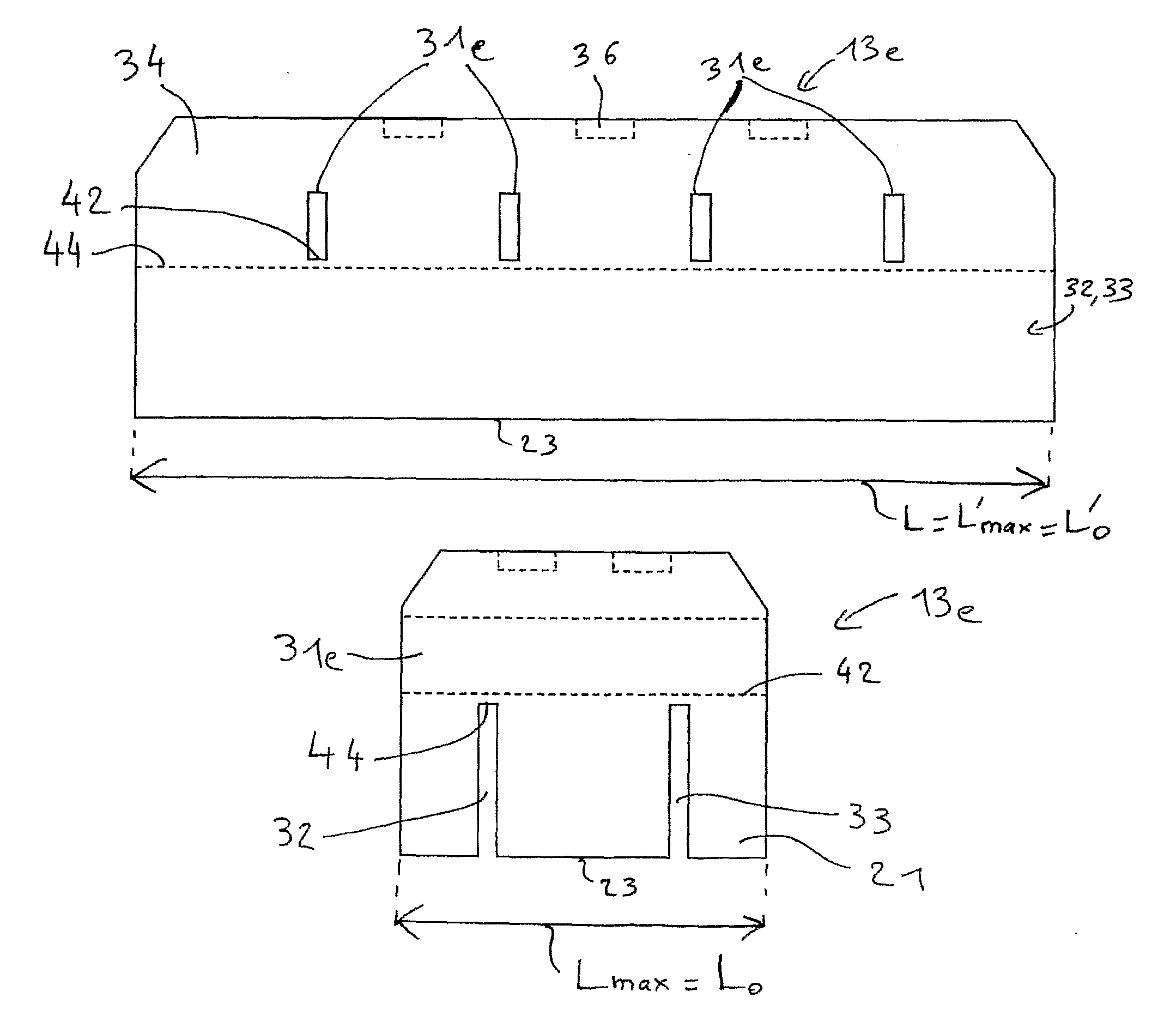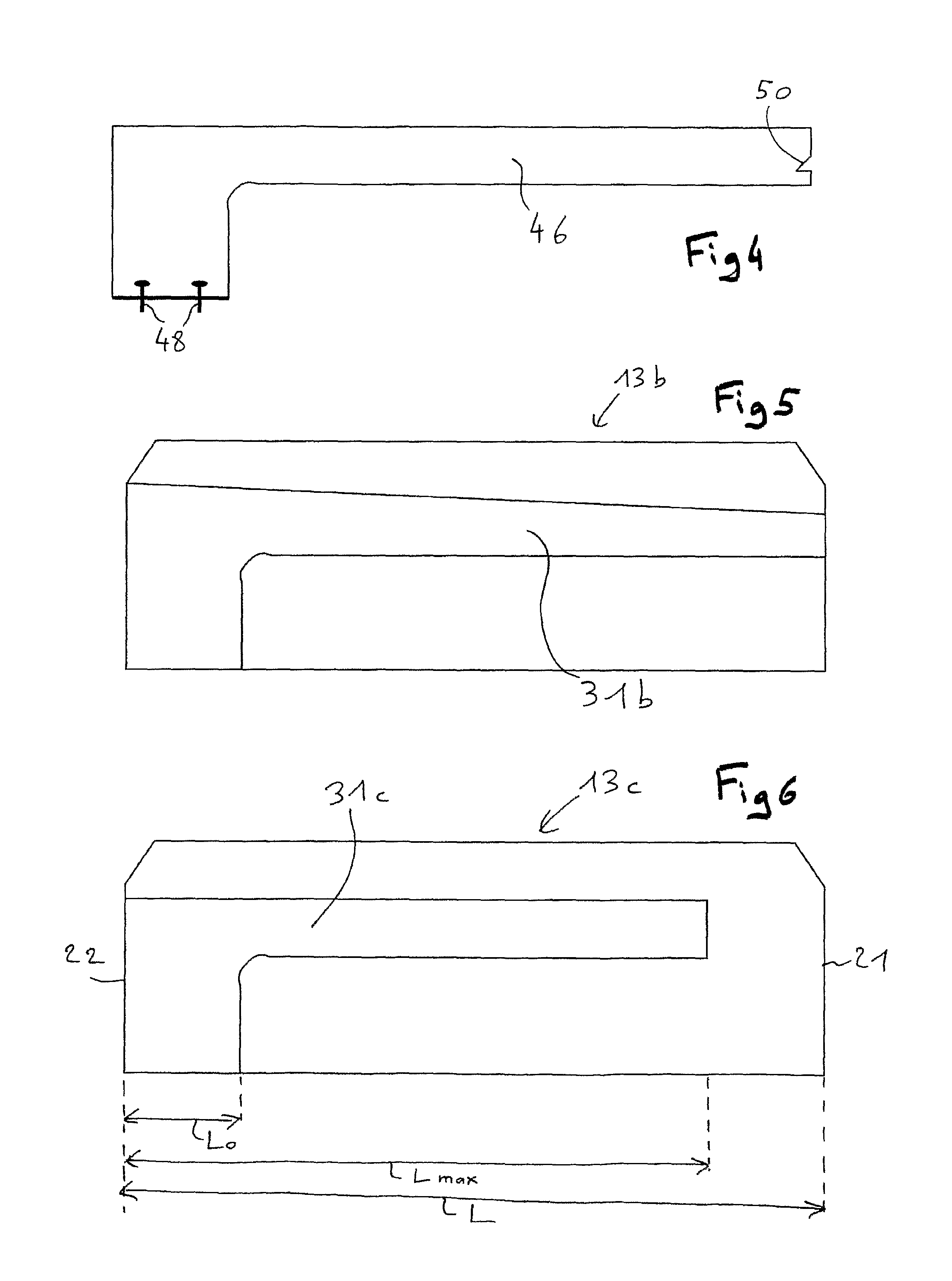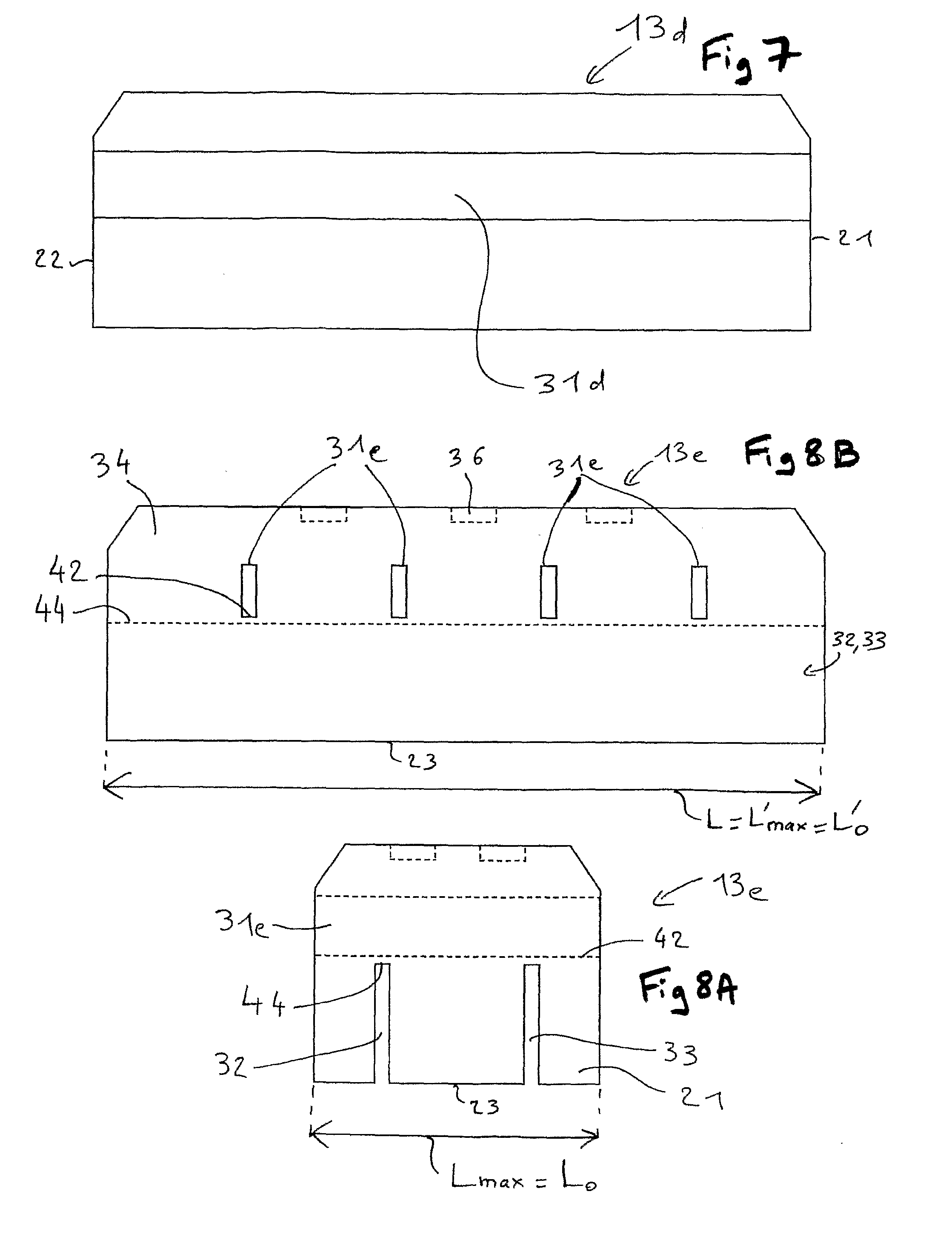Grooved anode for electrolysis cell
- Summary
- Abstract
- Description
- Claims
- Application Information
AI Technical Summary
Benefits of technology
Problems solved by technology
Method used
Image
Examples
first embodiment
[0062]FIGS. 2A, 2B and 3 show an anode block 13a according to the invention. The anode block 13a is typically of right-angled parallelepipedic shape of length L between two opposite short side faces 21 and 22 typically vertical and of height H between a typically horizontal lower face 23 and a higher face 24. As shown in FIGS. 2A, 2B and 3, the higher edges can be cut away to limit carbon losses. The anode blocks are designed to be consumed down to a maximum wear height indicated by arrows 25.
[0063]The anode block 13a comprises a first groove 31a and two second grooves 32 and 33.
[0064]The second grooves 32, 33 typically pass right through the anode block in the direction of length L. FIGS. 2A and 2B, which shows the short opposite side faces 21, 22 of the anode block 13a, show that these second grooves 32, 33 lead onto the lower face 23 throughout its length and onto the two short side faces. Consequently, the second grooves 32, 33 lead onto the lower face 23 over lengths L′0 equal ...
PUM
| Property | Measurement | Unit |
|---|---|---|
| Fraction | aaaaa | aaaaa |
| Fraction | aaaaa | aaaaa |
| Time | aaaaa | aaaaa |
Abstract
Description
Claims
Application Information
 Login to View More
Login to View More - R&D
- Intellectual Property
- Life Sciences
- Materials
- Tech Scout
- Unparalleled Data Quality
- Higher Quality Content
- 60% Fewer Hallucinations
Browse by: Latest US Patents, China's latest patents, Technical Efficacy Thesaurus, Application Domain, Technology Topic, Popular Technical Reports.
© 2025 PatSnap. All rights reserved.Legal|Privacy policy|Modern Slavery Act Transparency Statement|Sitemap|About US| Contact US: help@patsnap.com



